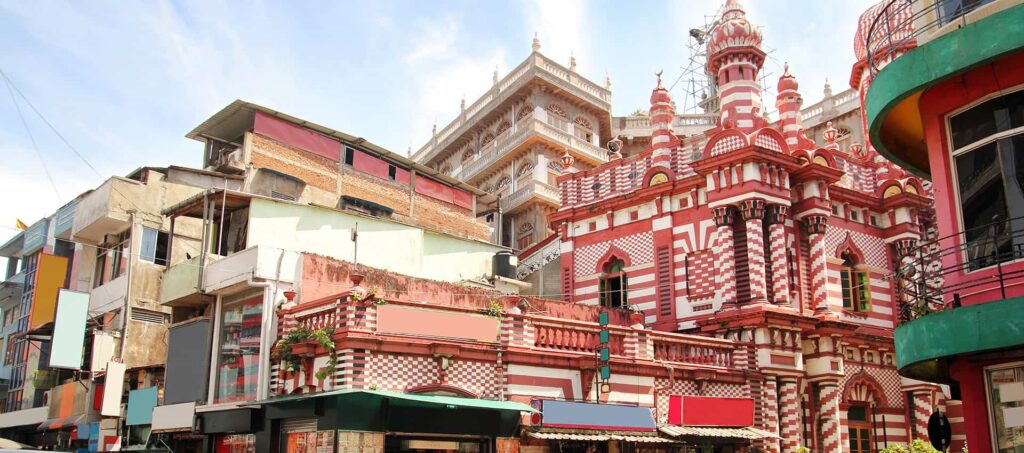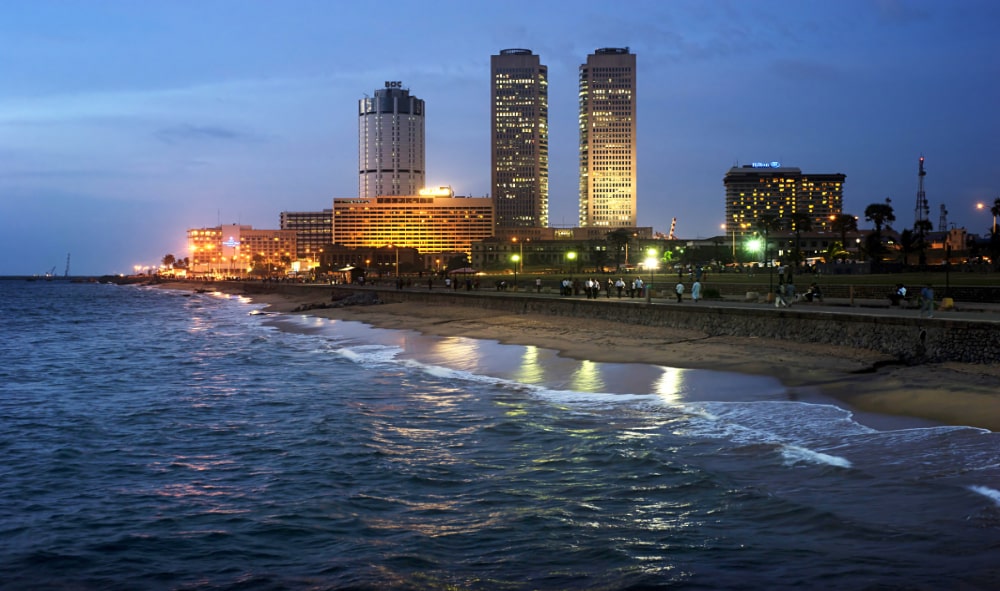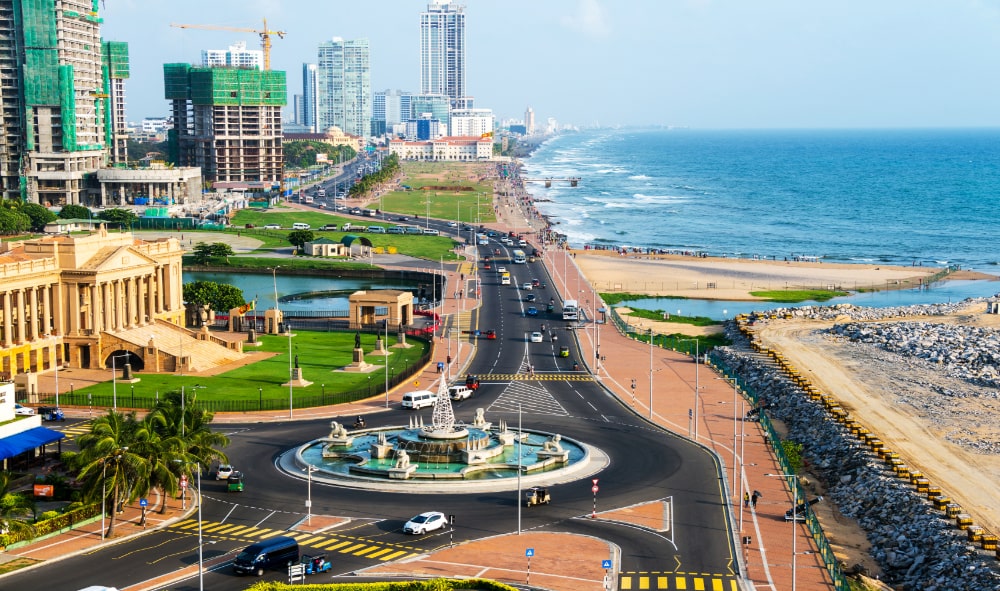Colombo Fort and Pettah Architecture
Sum up
Colombo’s three-mile long rampart, which separates the area covered by the Fort and Pettah, was originally built in the sixteenth century by the Portuguese and was then further developed by the Dutch and the British, the colonial powers which later occupied Sri Lanka. Today, it is the commercial hub of the country, consisting of government offices, banks, five-star hotels and the country’s largest wholesale bazaar. Pettah market is a maze of by lanes and small shops, crowded with people either loudly advertising their wares or searching for the best purchases. frantically buying and selling. Every imaginable item is sold here, and at a bargain – fruit, vegetables, fish, spices, fabric, homeware and even gold jewellery.
Duration: 3 hour
Best Time: Year-round
Additional Information
Colombo’s three-mile long rampart, which separates the area covered by the Fort and Pettah, was originally built in the sixteenth century by the Portuguese and was then further developed by the Dutch and the British, the colonial powers which later occupied Sri Lanka. Today, it is the commercial hub of the country, consisting of government offices, banks, five-star hotels and the country’s largest wholesale bazaar. Pettah market is a maze of by lanes and small shops, crowded with people either loudly advertising their wares or searching for the best purchases. frantically buying and selling. Every imaginable item is sold here, and at a bargain – fruit, vegetables, fish, spices, fabric, homeware and even gold jewellery.
In the Fort district, many of the old colonial buildings still stand, in glorious contrast to the rest of Colombo’s modern skyline. Interesting buildings to visit include: Galle Face Hotel (once the mansion of a British Governor and one of the oldest hotels in Asia); Presidential Secretariat (previously the Parliament house); Grand Oriental Hotel (previously barracks for soldiers during Dutch period),the red and white Cargills & Millers department store buildings, the General Post Office and the Fort Police Station (previously a Dutch hospital). The St. Peter’s Church and the Wovendaal Church, located by the Grand Oriental Hotel, were also built during the Dutch period.
If you are interested in discovering more about the history of Colombo Fort and admiring its beautiful colonial architecture, why not try the Colombo’s Hidden History walk?
Popular Activities
Night city cycling tour of Colombo Sum up Escape the sun and the crowds and go on a guided night city cycling …
National Museum Sum up The National Museum of Colombo, also known as the Sri Lanka National Museum, is the largest museum in …
Bawa Architecture Sum up The late Geoffrey Bawa, Sri Lanka’s most influential architect, was responsible for linking the ancient architecture of this …
The Life of Geoffrey Bawa Sum up One of Asia’s most prominent 20th century architects, Geoffrey Bawa is one of Sri Lanka’s …
Talangama Wetlands Sum up Located just a few kilometres from Colombo’s city centre, the Talangama Wetlands are an oasis of peace within …
Colombo Artist in Residence Sum up Spend time in the studio and gallery at the home of a globally-exhibited Colombo artist and …
Bellanwila Raja Maha Viharaya Sum up Located close to Mt. Lavinia, just three kilometres from Colombo’s city limits, Bellanwila Raja Maha Viharaya …
Colombo by colonial car Sum up Have you ever fancied living in a different era, or appearing in your own movie? And …
Colombo Fort and Pettah Architecture Sum up Colombo’s three-mile long rampart, which separates the area covered by the Fort and Pettah, was …
Colombo Guided Walk – Religion and Culture Sum up Explore Colombo’s fascinating multi-cultural society on this guided walking tour, led by a …
Colombo’s Hidden History Sum up Walk through the streets of Colombo, hear of tales from times gone by and witness the changing …
Slave Island Walking Tour Sum up Like many capital cities, Colombo is a melting-pot of cultures. As well as the traditions that …
Kelaniya Raja Maha Viharaya Sum up Situated six miles from Colombo, the ancient Kelani Raja Maha Viharaya has stood beside the Kelani …
Kovils in Colombo Sum up The city of Colombo has several Hindu Kovils, all decorated with colourful, ornate statues and shrines dedicated …
Colombo Cooking Class Sum up Sri Lankan cuisine is very distinctive, an intriguing combination of flavours and aromas influenced by the island’s …
Colombo Restaurant Guide Sum up As Sri Lanka’s commercial capital, Colombo boasts a wide range of cuisine from across the globe. Whilst …
Colombo Tea Factory Tour Sum up Explore the history of Ceylon tea without having to head into Sri Lanka’s hills by going …
Colombo’s Street Food Walk Sum up Your health and safety is and will continue to be our highest priority. In response to …
Colombo by Tuk Tuk Sum up Sri Lanka’s coastal capital is conveniently compact, but navigating the lively, cross-crossed streets can be tricky, …
Ayurveda Background Sum up Ayurveda is a natural healing method which promotes general well being and seeks not only to cure disease …
Cricket General Information and Supporter Tours Sum up There is no finer, more welcoming, place in the world than Sri Lanka to …
Royal Colombo Golf Club Sum up A tranquil oasis in the heart of Colombo, the Royal Colombo Golf Club offers a welcome …





























